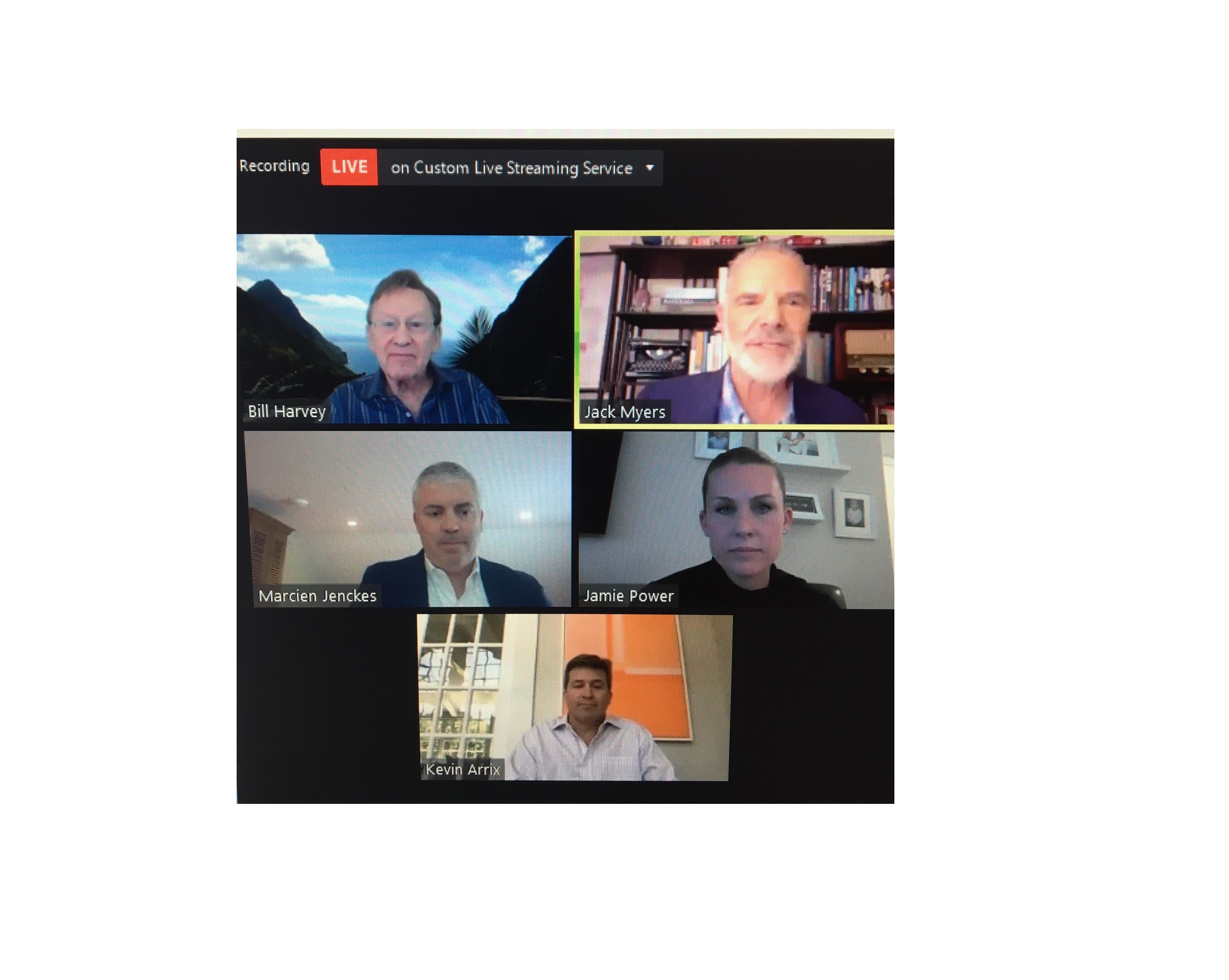Addressable TV: On the Cusp of Going National Scale

Register here for our upcoming Jack Myers Leadership Conversations with NPR's Michael Smith - June 22, Interpublic's Michael Roth - June 25 and more. As we enter a media era where audience targeting is rapidly overtaking traditional demographic targeting as the standard currency, Advanced TV, in particular addressable TV, is having a moment. Is it the huge, long awaited moment for which those with a vested interest have been waiting for the past two decades? That depends on the ability of several players within the ecosystem, some complimentary, some competitive, to come together and create a simplistic, scalable, robust, and accountable system, quickly.
Whether it is the creation of varying messages or the ability to target hyper-local and specific audiences, the advantages associated with Addressable TV have never been more clear. The rolling geographic proclivity of the COVID-19 virus practically ensures, for at least the next 6-12 months, that the business ecosystem will not only be far from normal, but will differ dramatically region to region, town to town, and even zip code to zip code. A single ubiquitous message may not only become irrelevant in some cases, but come off to consumers as irrelevant, or worse, tone-deaf. Conversely, opportunities to provide consumers with useful information that's relevant to their circumstances and that communicate with specificity would be viewed as providing a higher utility than a general national message.
What is lacking, according to an esteemed group of industry panelists who joined the MediaVillage Jack Myers Leadership Conversation around Advanced TV, is simplicity, congruency, and scale. However, much progress has been and is being made on all those fronts.
Myers was joined by representatives from cable (Marcien Jenckes, President Advertising, Comcast), satellite (Kevin Arrix, SVP, Dish Media), advanced tv platform provider (Jamie Power, Chief Data Officer and COO of Advanced TV, Cadent), and research (Bill Harvey, Chairman Research Measurement Technologies & MediaVillage columnist) on June 9th in an online panel which is part of the Jack Myers Leadership Conversations for Renewal and Growth to benefit the Advertising and Media Community Economic Relief Fund.. View the full Advanced TV Leadership Conversation here.
The discussion opened with general agreement among the panelists on the definition of Advanced TV, which Arrix defined "as anything [video delivered on a TV screen] that is data-driven."
Through the years, Addressable TV has moved from a pilot test phase to a common media plan line item. The challenge has been the ability to scale it nationally with a strong reach at an adequate frequency in a particular household segment to justify moving dollars out of the traditional national TV bucket into Addressable TV. The largest barrier to achieving that scale has been the ability to activate addressable for marketers on more than the local advertising break inventory. (Local cable operators have rights to overlay two-dedicated minutes per hour on cable networks to local advertising.) As opposed to a digital IP infrastructure that was built for addressability from the start, Addressable TV has been a painstaking, but finally effective undertaking to integrate addressable technology into the existing television tech infrastructure. Addressable inventory on national linear TV is a prerequisite for achieving that necessary scale.
Against a backdrop of TV budgets moving at a greater rate into the large digital media companies like Google, Facebook, Amazon, Roku, and other OTTs, broadcast and cable networks are looking to stay competitive. 2020 is the year that trials of addressability on national TV inventory will start in earnest. The technology has improved to the point where, says Jenckes, "It's relatively easy." Several companies, including Nielsen, with whom Disney just announced its participation and the "On Addressability" initiative spearheaded by Comcast, Charter, and Cox, with whom AMC Networks has announced their participation, will test national linear addressable advertising.
While the technical challenges may have been solved, the business models still remain a question mark. Jenckes believes "There's a challenge around how you manage yield. You can sell inventory in a lot of different ways. I can sell a full spot at a set CPM (cost-per-thousand) or a much narrower sliver at a higher CPM. As the owner of the inventory, I have to figure out which is best to do and how do I optimize the value of that." One likely first step is that national linear addressable could be used for versioning. As Arrix explained, "you're not breaking up the linear spot, but you use deterministic data to deliver the right creative to the right household (across the whole ad unit). We are starting with a single marketer that might have multiple brands in its portfolio. That is underway and there are a handful of programmers that are on board.
Jenckes laid another barrier straight at the feet of Nielsen. "We can measure the addressable portion of the spot just like we do digital impressions. It's the 'under-addressable' portion of the spot that becomes a challenge. Nielsen is panel based. If one of the panelists gets a different ad it breaks the model. There's a lot of work that needs to happen on that front."
When asked about the complexity and the premiums involved with Advanced TV, Cadent's Power adamantly stated "If you do it right, it doesn't cost more. If everyone would understand it, there's a place for addressable in every media plan whether its ROI driven or up the funnel to combat fragmentation." Harvey agreed, "You really are not paying a premium. If you do it right, you are getting a discount on the e-CPM."
Harvey, who has been pushing addressability since he first mentioned it in 1979, applauded the industry for recognizing the need for interoperability and collaboration. "The big factor that is going to change everything is ROI and the date. Right now, each individual party, whether it's the MVPD, TV manufacturer or streaming service, the data is disaggregated into these silos. If we put them all together, we have the measurement system of the future. The census approach will be the solution, but we literally have to come together, not just say it, I believe it's going to happen."
The main theme coming out of the discussion was this need for coopetition and coming together as an industry around common definitions, standards, and technological interoperability. Without that happening and happening now, the consumer transition to IP based viewing and the lure of audience targeting may be too far along for the traditional players to catch up.
Also Read:
Is It Now or Never For Advanced TV? Collaboration Will Tell Us by Charlene Weisler
A United TV Advertising Front, and How to Start It by Simon Applebaum
Will 2020 Be the Breakout Year for Addressable TV? by Bill Harvey
Media Experts Agree, 2020 Is a Decisive Year for Advanced TV by Nathan Holman
To see all upcoming Leadership Conversations for Renewal and Growth and view prior Conversations on-demand, please check the schedule and archive.
Click the social buttons to share this story with colleagues and friends.
The opinions expressed here are the author's views and do not necessarily represent the views of MediaVillage.com/MyersBizNet.


